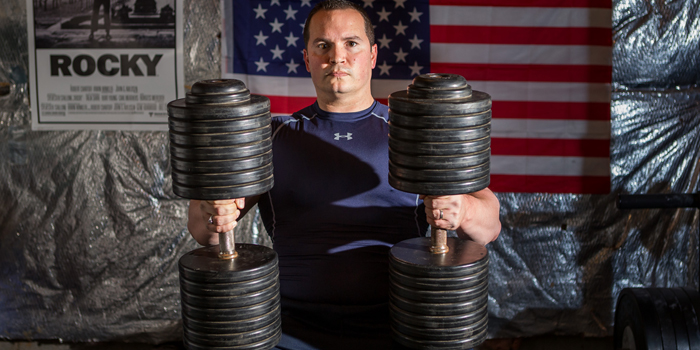
Surround yourself with greatness and you will increase your chances for success. I am fortunate to train at a facility — Tim Gallagher’s Colosseum Gym in Columbia, Maryland — with the likes of renowned strongmen Andy Deck and Jon Ward, and powerlifting fixtures Mike Sichelman (USAPL Maryland State Chair) and Iain Burgess (who, at 73, still regularly trains, coaches, and competes). It has been incredibly worthwhile during training sessions to be able to bounce off programming ideas and solicit feedback on technique from experts with many decades of lifting experience.
Since 2011 I have been working towards a goal of one day representing the USA as a master’s lifter at the IPF World Classic Powerlifting Championship. Increasing my raw bench press has been an integral part of pursuing this dream: my competition PR has jumped from 358 pounds to 413 pounds over the last three years, and I am confident that more gains are right around the corner.
MORE: How to Bench 5 Plates Raw: 400 to 500 at a Moderate and Sustained Pace
Recently I began documenting the various elements that have contributed to these gains. Without further ado, here are some of the tried-and-tested methods that helped me finally break through the 400-pound barrier, which had been a monkey on my back for years.
Mentality
1. This may sound hokey to some, but I was once told I needed to “mentally accept the weight” before I could ever physically move it. And it is true; I used to attach an intellectual glass ceiling to both the 400-pound number and the four-plate (405 pounds) image, thinking that such gargantuan raw bench numbers were reserved for superhumans who didn’t used to play soccer and run marathons. Meanwhile, sometime in 2014 I began to actually believe I would become capable of such a feat and, lo and behold, the following year my own personal four-minute mile became a reality when I benched four plates during a training session. Bottom line: if you do not believe you can achieve a certain lift, whatever it may be, you are almost certainly right. You have got to believe it to achieve it!
Form and Technique
2. As you set up for the bench press, ensure your body positioning is as tight as possible, like a bow stretched to its limit pending the arrow’s release. This will help you make the most of your leg drive as you simultaneously minimize the bar path.
3. Grip the bar as tightly as possible, and pull the bar apart to help optimally position your lats and shoulder blades during the setup.
4. Squeeze your glutes and have them barely grazing the bench as you focus on leg drive during the concentric (pressing) phase.
5. Retract and depress your shoulder blades as much as humanly possibly to have your chest jutting out to the maximum extent and to reduce the bar path. Think about inching your shoulder blades down towards your glutes as much as you can.
6. Experiment with wider grips over time until you reach your widest optimal hand positioning (notice I said optimal, as sometimes wider is not better). Index fingers on the rings will work for some but definitely not all lifters; test out your strength and get a feel for your leverages at different widths to make sure you are maximizing your width option based upon your unique physiology or body type.
7. Experiment with the two main strategies that powerlifters tend to use. First, try a slow and steady descent until the bar barely grazes the chest (one then waits for the “press” command). Second, experiment with a rapid descent to let the bar “sink” into the upper abdomen/lower chest, followed by a somewhat herky-jerky “explosion” off the chest at the command signal. Some lifters are more suited for one than the other; know which category you fall into, and consistently practice training this way.
8. Take a close-to-maximal amount of air in and hold it steady just before (or just as) you have the hand-off man help you unrack the weight. Holding your air big and tight will lessen the time it takes to get the start command, as the bar must be steady before the prompt is given; in addition, the air in your lungs will help expand the rib cage and minimize the bar path. Finally, you’ll be taking advantage of the Valsalva effect as you maintain tenseness while you hold your breath throughout the lift.
9. Study optimal bar paths (not all bar paths are exactly the same for all body types) and experiment with pushing the bar up slightly back towards your face (instead of straight up or away from your face) as you explode off the chest.
10. Maintain serious tightness in the lats and do not allow your elbows to flare out as you push the weight up. Keeping the elbows tucked in will improve your leverages and will help you succeed with lifts you otherwise might have failed.
11. Find the right touch-point for you. For most people, this will fall just below the nipple line when in a truly arched and tight position. That said, some will find that a touch-point on the nipples or even on the upper abdominals will feel like a better fit that will minimize the bar path and maximize force off the chest.
12. Do not wait for the bar to be on your chest before you generate leg tension. Maintain some tension in the legs as you do your initial setup, and then go all-out with your leg drive the second you get the press command (but be sure to maintain at least minimal contact between the glutes and the bench, or you will fail the lift). Successfully using leg drive is an advanced skill, and it will require some practice in order to master.
Training
13. Practice benching with a pause on the chest (and occasionally with the command prompts, too). Do not expect to know what maximum weight you can handle with a pause when all of your training has been touch-and-go. This is a surefire way to be disappointed with your third attempt in a meet.
14. Bench at least twice per week. Some will benefit from three benching sessions per week. For most people, four benching sessions per week will prove too much (unless volume and intensity are kept in check, and rest and recovery are maximized).
15. Focus on technical proficiency and form. Your reps should be repeatable. For the vast majority of your training, keep your RPE in check so that your form does not break down. Ensure you are establishing a repeatable motor pattern.
16. Speaking of RPE, the bulk of your training should be at RPE 9 or below. Save RPE 9.5 and 10 lifting for unique occasions with very specialized goals. Your gains (and joints) will thank you for being judicious with your programming.
17. Vary your grip width during training to develop “the full package.” That said, spend the majority of training using your competition grip (see number six above).
18. Choose the most worthwhile accessories to add to your bench training, such as: dips, close-grip bench press, floor press, military press, skull crushers, and dumbbell bench press (which happens to be a personal favorite of mine).
19. Add the aforementioned accessories after your bench pressing, and only as desired or needed, meaning, on days when you are feeling fantastic and have the needed energy reserves, keep pushing it. Conversely, if you are worn out, slightly under the weather, and maybe shouldn’t even be at the gym, stop lifting after you wrap up the “core” of your workout (the S-B-D elements).
20. Big names such as Jim Wendler recommend doing a set of chins between all bench press sets to maintain a balance of strength between your chest/triceps on the one hand and your back/biceps on the other. Whether you elect to go this route or not, ensure you do not neglect back development, as lats will serve as the base upon which your initial push off the chest will partially rely after the pause.
Injury Prevention and Rehab
21. Make your shoulder health a priority. Nothing stunts growth like injury (and yes, I am speaking from experience, unfortunately). Ensure you are optimizing rotator cuff health as you increase volume and intensity (meaning percentage of 1RM). One way of doing this is by performing band work between heavy sets. Find a variation that speaks to you and try it out for a while.
22. Take care of your elbows. Use a lacrosse ball or another trigger point release mechanism to release tension in your elbow muscles after heavy training cycles. Know when to back off for a while, and be especially careful when programming large amounts of weighted dips and/or skull crushers. These exercises can be very useful for increasing strength, but they are also known for occasionally wreaking havoc on the joints.
23. Consider investing in an elbow and forearm recovery tool (such as Armaid).
24. Rest and refuel properly. Much like with the squat and deadlift, if you crank out grueling sessions in the bench press and fail to either a) consume enough calories and protein, or b) obtain enough rest and sleep, expect to have sub-optimal recovery and even potentially to do more harm than good as your body enters a catabolic (muscle-wasting) state. Know when to give your joints and muscles a break.
Equipment and Tools
25. Try benching with a bench belt or even a normal (squat/deadlift) belt to get a feel for your preference. While many see no need for a belt for the bench press, some believe there is at least a psychological (if not a physiological) advantage attached to the feeling of tightness/secureness of the midsection.
26. Invest in IPF-approved (36” max length) sturdy wrist wraps and learn how to use them properly. The wraps should come up onto the palm a bit and should be wrapped around in such a manner that the wrist is locked into position as if in a cast. That said, do not neglect to remove the thumb loops, and do ensure the bar will not make contact with the wrist wraps, as this is a rule violation in some federations.
27. With your wrist wraps properly positioned, your wrists should extend straight out from your forearms (as opposed to being bent backwards by the heavy weight). If they are bent backwards, your wrist wrap placement is off and your technique is probably not optimal.
28. Your footwear matters. Invest in a pair of lifting shoes with a solid and sturdy base and, especially if you have shorter legs, consider a raised heel, as is found in many squat shoes. My personal favorite shoes for both bench and squat are the Nike Romaleos.
29. Now that you have the proper footwear, ensure your foot positioning is wide enough to give you a solid base from which you can generate force. As mentioned earlier, you should work towards “becoming a bow" that is cocked back into position and ready to fire.
30. Consider training in elbow sleeves to keep the joint warm and slightly compressed. That said, ensure you can mentally perform lifts without the sleeves at the same level of execution, since they are not allowed in USAPL and IPF competitions.
Knowledge Base
31. Ensure you know the rules for the federation in which you are competing. Some feds, like the USAPL (and the IPF), will require your feet to remain flat on the floor and your head to remain in contact with the bench. In addition, your butt must not come off the bench during the lift.
32. Study internal shoulder mechanics as well as strategies for protecting your shoulders and particularly your rotator cuffs. Read books like “Treat Your Own Rotator Cuff” and “Bulletproof Your Shoulder,” both by Jim Johnson, PT.
33. Study bench press technique and programming strategies by reading books like “Bench Press: The Science,” by Josh Bryant, and “The Strength Coach: Developing the Bench Press,” by Paul Kerridge. These and other experienced powerlifters have spent years trying to package the most useful information and science; elect to benefit from their wisdom and research. Stand upon the shoulders of giants!
34. While we’re on the topic of books, you really should own and read Mark Rippetoe’s “Starting Strength” and “Practical Programming for Strength Training.” Another winner is Tim Henriques’ “All About Powerlifting.” Stop ingesting hype-filled muscle magazine articles and starting reading books with time-tested techniques (minus the marketing hype).
In sum, breaking through bench barriers is a matter of perfecting technique, consistently training both hard and smart, ensuring proper rest and refueling, and avoiding injury like the plague. Here’s to bench PRs for elitefts readers in 2017!
References
- Bryant, Josh. Bench Press: The Science. JoshStrength, LLC, 2013.
- Henriques, Tim. All About Powerlifting. Mythos Publishing LLC, 2014.
- Johnson, Jim. Treat Your Own Rotator Cuff. Dog Ear Publishing, LLC, 2007.
- Johnson, Jim. Bulletproof Your Shoulder. Dog Ear Publishing, LLC, 2014.
- Kerridge, Paul. The Strength Coach: Developing the Bench Press. 2nd ed., Kerridge Sports Publications, 2010.
- Rippetoe, Mark. Starting Strength. 3rd ed., The Aasgaard Company, 2013.
- Rippetoe, Mark and Andy Baker. Practical Programming for Strength Training. 3rd ed., The Aasgaard Company, 2013.
- Wendler, Jim. 5/3/1 for Powerlifting: Simple and Effective Training for Maximal Strength. Jim Wendler, 2011.
Nathaniel Hancock is a national powerlifter competitor in the USAPL federation. He is a former Maryland state record holder in the bench press and recently won the 105kg weight class at the 2016 USAPL Push-Pull Nationals with a 413-pound raw bench. A former marathoner and state champion bodybuilder in Utah, Nathaniel transitioned to powerlifting training in 2011. Nathaniel is a certified personal trainer and has been featured in international fitness magazines. He and his wife have four children and reside in Maryland. Check out www.persistpowerlifting.com for more information.









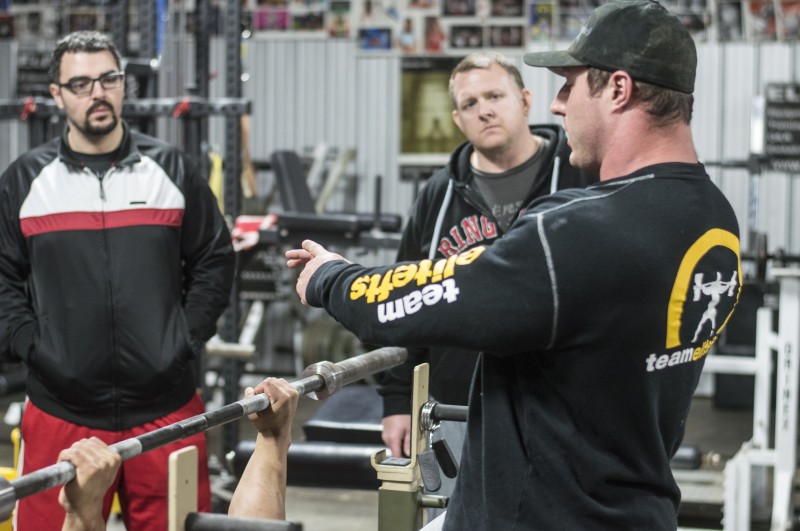
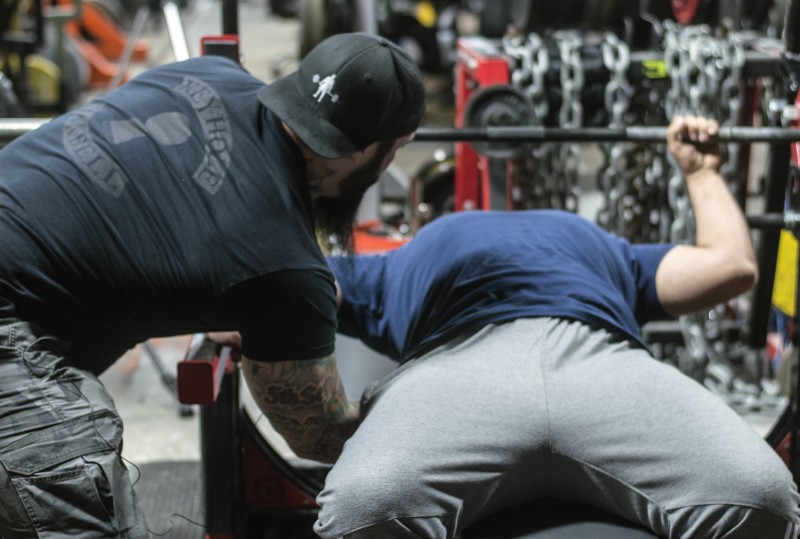
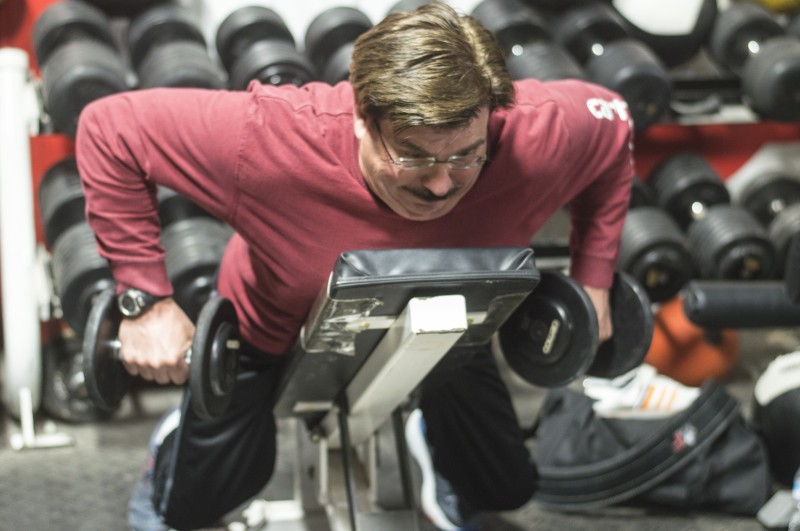
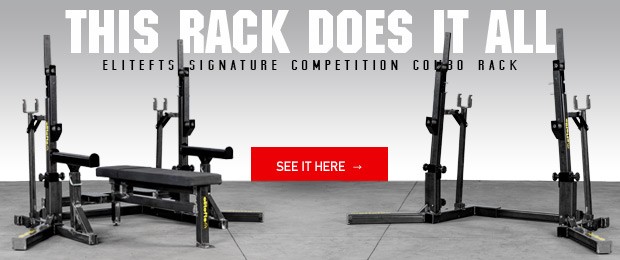
4 Comments